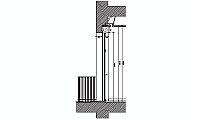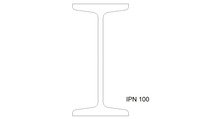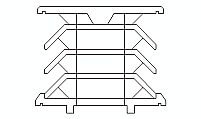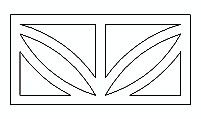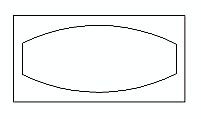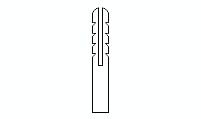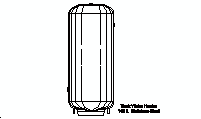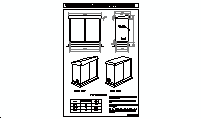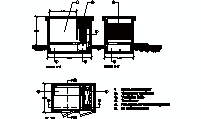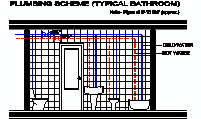CAD Blocks categories
 3D models
3D models home furniture
home furniture sanitary ware - bathrooms
sanitary ware - bathrooms professional equipment
professional equipment doors and windows
doors and windows people and animals
people and animals plants and trees
plants and trees vehicles - transports
vehicles - transports architectural details
architectural details mechanical - electrical
mechanical - electrical urban planning - civil works
urban planning - civil works safety health construction
safety health construction accessible design
accessible design drawing sheet
drawing sheet signals
signals construction machinery
construction machinery accessories and objects
accessories and objects maps and street maps
maps and street maps
Steel Nut Side View - DWG CAD Design

size: 4 kb
category: architectural details
related categories:
description: Front elevation of a steel nut in CAD format, showing a hexagonal design with a circular threaded opening for bolts.
file extension: .dwg CAD - AutoCAD software
Dimensions, Standards, and Uses of Steel Nuts
Overview of Steel Nut Design and Features
Steel nuts are essential fasteners in the construction and engineering industries. The nut shown in the image features a hexagonal outer design for easy gripping with tools and a circular central threaded opening to accommodate bolts. This shape ensures optimal torque application and even stress distribution during use.
Steel nuts are typically paired with bolts of matching thread sizes and are used to secure structural components. Their design ensures durability and resistance to shear and tensile forces, making them indispensable in heavy-duty applications such as steel structures, machinery assembly, and bridge construction.
Common Dimensions and Standards for Steel Nuts
The dimensions of steel nuts vary depending on their application and regional standards. In the U.S., steel nuts commonly adhere to ANSI/ASME B18.2.2, with sizes ranging from 1/4 inch to 2 inches in diameter. In Europe, the DIN 934 and ISO 4032 standards regulate hex nuts, with sizes typically measured in millimeters, such as M6 to M64. In Asia, countries like Japan follow the JIS B 1181 standard for similar specifications.
For smaller precision applications, nuts can range from 6 mm (M6) to 20 mm (M20), while larger applications may require sizes exceeding 50 mm (M50). The threading is standardized to ensure compatibility with bolts and washers manufactured under similar guidelines.
Torque Specifications and Installation Guidelines
- What is the recommended torque for tightening steel nuts?
- Torque values depend on the size and grade of the nut. For example, a Grade 8 steel nut with a diameter of 1 inch typically requires 250-300 ft-lbs of torque.
- Are washers required during installation?
- Washers are recommended to evenly distribute the load and prevent damage to the surface beneath the nut.
- How do you prevent loosening over time?
- Using lock washers, thread-locking compounds, or nyloc nuts can prevent loosening due to vibration.
- Can steel nuts be reused?
- Steel nuts can often be reused, but they should be inspected for damage or wear before reapplication.
- What tools are best for tightening?
- Torque wrenches are the preferred tools to ensure precise tightening according to torque specifications.
Applications of Steel Nuts in Construction and Engineering
Steel nuts are widely used in various industries, including construction, automotive, aerospace, and mechanical engineering. In the construction sector, they are essential for connecting structural steel components, securing beams, and assembling trusses. They also play a critical role in machinery assembly, ensuring that components remain securely fastened under dynamic loads.
Other common applications include bridge construction, wind turbine assembly, and fastening critical infrastructure elements. Steel nuts are also used in high-stress environments where resistance to vibration, corrosion, and temperature variations is crucial.
Standards and Evolution of Steel Nuts
The manufacturing and design of steel nuts are governed by strict standards to ensure compatibility and reliability. Key standards include ANSI/ASME B18.2.2 in the U.S., DIN 934 in Europe, and JIS B 1181 in Japan. These standards regulate dimensions, material grades, and threading to maintain uniformity across industries and regions.
Over the years, steel nuts have evolved from basic hand-forged designs to precision-engineered components capable of withstanding extreme stresses. Advanced coatings and treatments, such as zinc plating, galvanization, or black oxide finishes, enhance their durability and resistance to corrosion, making them indispensable in modern engineering applications worldwide.



